Have you ever considered the craftsmanship behind every tube of lipstick your business offers? The process is a testament to innovation, crucial for businesses aiming to stand out in the competitive cosmetic market.
As an expert in the cosmetic industry, I bring years of experience and a deep understanding of the variations involved in creating high-quality cosmetic products.
The manufacturing of lipstick involves a carefully crafted process that ensures quality and consistency in every batch. It’s an art and science that combines aesthetic appeal with practical functionality.
In this guide, we will explore the 9 key stages in lipstick manufacturing, delving into the details of formulation, molding, and more. You will gain a comprehensive understanding of each step’s importance and how they contribute to creating a product that meets the high standards of the cosmetic industry.
Continue reading for a colorful discovery!
To begin the journey of lipstick manufacturing, it’s essential to start with thorough market research and conceptualization. This is where product development meets current market demands and anticipates future trends. Here’s how to do it:
The first step in market research is to identify your target market. Understand who your customers are, including their preferences, buying behavior, and the price range they are comfortable with. Analyzing your target market helps tailor your product to meet their specific needs and preferences, ensuring your lipstick stands out in a crowded market.
| Criteria | Description |
| Demographics | Analyze the age, gender, income level, education, occupation, and location of your target customers to understand their specific demographic profile and how it relates to their purchasing decisions. |
| Psychographics | Dive into the lifestyle, interests, values, attitudes, and behaviors of your target audience to gain insights into their motivations and preferences, helping tailor your marketing strategies and product features to resonate with their unique psychographic characteristics. |
| Buying Behavior | Examine how your target market makes purchasing decisions, including their decision-making process, factors influencing their choices, frequency of purchases, and preferred channels for buying, which allows you to align your marketing efforts and product offerings accordingly. |
| Pain Points | Identify the challenges, frustrations, and unmet needs of your target customers that your product can address or solve, enabling you to position your lipstick as a solution to their specific pain points and differentiate it effectively from competitors in the market. |
| Competitive Analysis | Conduct a thorough analysis of your competitors, including their products, pricing strategies, marketing tactics, distribution channels, and customer feedback, to identify gaps in the market and opportunities to position your lipstick uniquely and capture market share effectively. |
Next, conduct a comprehensive analysis of your competitors. Look into their product offerings, marketing strategies, and customer reviews. This insight allows you to identify gaps in the market that your lipstick can fill. By understanding your competition, you can position your product to capitalize on unmet needs within the market.
Stay abreast of the latest trends in the cosmetic industry, including colors, textures, and packaging innovations. Trend analysis involves researching fashion industry forecasts, attending trade shows, and monitoring beauty influencers and social media. This knowledge informs the conceptualization of your lipstick, ensuring it resonates with contemporary consumer desires.

With gathered information, the next crucial step is to develop your product concept. Your concept should reflect your brand identity and appeal to your target market, setting the foundation for a successful product launch. Here are some considerations you should focus on:
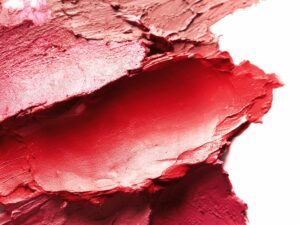
Following the market research and concept development, ingredient selection is the next critical step. This phase is where you decide on the components that will fulfill the conceptualized product. Here’s a detailed process on selecting lipstick ingredients:
The fist step is the base ingredients to form the foundation of your lipstick. These typically include waxes like beeswax or carnauba wax, oils such as coconut or castor oil, and emollients. Select base ingredients that provide the desired texture and application experience. For instance, choosing the right mix of waxes and oils can determine the hardness, melting point, and moisturizing properties of lipstick.
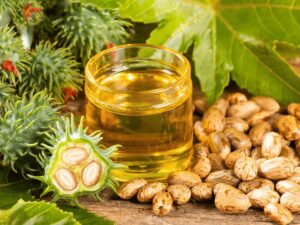
Colorants are central to the appeal of any lipstick. You must choose from pigments and dyes that are approved for cosmetic use. Consider the purity, intensity, and compatibility of colorants with your base ingredients. It’s also important to reflect on the color trends identified during the market research phase to ensure your selection meets consumer expectations.
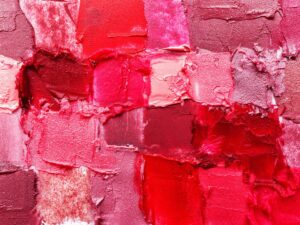
Additives enhance the functionality and shelf life of the lipstick. It’s important to know that this can include antioxidants, preservatives, and sunscreens. Each additive should be chosen based on its efficacy and safety for lip application, ensuring the product remains stable and beneficial over time.
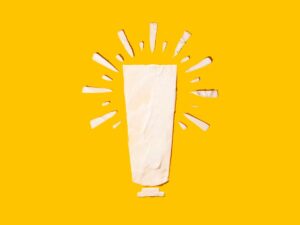
Ensuring that all selected ingredients comply with local and international regulations is crucial. This includes verifying that colorants and additives are approved for use in lip products by regulatory bodies like the FDA or the EU Commission. Safety testing, such as allergen checks and toxicity tests, is also essential to confirm that the ingredients are safe for consumer use.
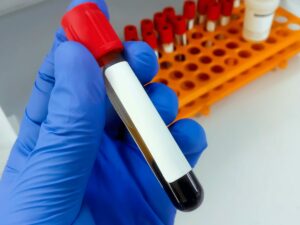
After selecting the right ingredients, the next step in lipstick manufacturing is color development. This stage is critical for creating a palette that reflects current trends and aligns with your brand identity. Here are the key processes involved in achieving the perfect color:
Color matching is the initial phase where you translate your conceptualized color palette into tangible lipstick shades. This involves experimenting with different proportions of pigments and dyes to achieve the exact hues and intensities envisioned. It’s like mixing magic to bring your dream colors to life. Precision in this process ensures that the final product accurately reflects the desired aesthetic.
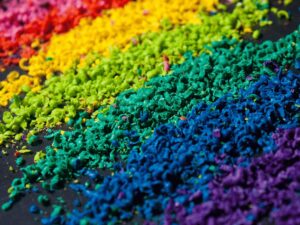
Once the initial colors are developed, it’s important to test them under various lighting conditions. Colors can appear differently under natural sunlight, fluorescent light, and LED light. Testing ensures that the lipstick shades remain appealing and consistent across all lighting conditions, an essential factor for consumer satisfaction.
Stability testing of the developed colors is crucial to ensure that the shades do not change over time or when exposed to different temperatures and conditions. This step involves placing the lipstick samples in controlled environments to monitor any changes in hue, intensity, or texture, ensuring long-term color fidelity. This is where we make sure your customer’s favorite shade stays true, come rain or shine.
Before finalizing the color palette, gathering consumer feedback is invaluable. This can involve focus groups, surveys, or sample testing with a target audience segment. Feedback on the appeal, uniqueness, and wearability of the colors can guide adjustments before mass production, ensuring the final product meets market demands.
With the color development phase complete, the focus shifts to creating the base formulation of the lipstick. This is to ensure the product’s performance and longevity. Below are the steps on how to do the base formulation:
The base starts with selecting the right waxes, which provide the structure and shape of the lipstick. Choices typically include natural waxes like beeswax or carnauba wax and synthetic waxes for stability. The right combination of waxes determines the lipstick’s firmness, melting point, and how smoothly it applies to the lips.
Oils and butters are added to the base to give the lipstick its creamy texture and moisturizing properties. For example, ingredients like jojoba oil or cocoa butter enhance the product’s feel making it comfortable to wear while providing hydration to the lips. Selecting the right oils and butters can also impact the glossiness and overall sensory experience of lipstick.
Emollients are included to ensure the lipstick glides on smoothly and evenly, improving application and wear. Antioxidants such as Vitamin E are often added to the formula to prevent oxidation and extend the shelf life of the product. This feels like a little pampering in one’s lips with every swipe. These ingredients work together to protect the lips and the integrity of lipstick over time.
Once the waxes, oils, butters, emollients, and antioxidants are selected, the final step is to combine them in precise proportions. This mixture is heated and stirred until homogenous, creating a base that is ready to be infused with the previously developed colors. The finalized base should support the color’s intensity, ensure comfortable wear, and meet the product’s performance criteria.
Transitioning from the base formulation to the next crucial step is combining pigments with the base, this is where the lipstick starts to take on its final form. Here are the essential steps in this process:
The process begins with a preliminary mixing of the pigments and the base. This initial blend ensures that the colorants disperse evenly throughout the base, preventing any clumping or unevenness in the final product. It’s crucial to achieve a uniform mixture to ensure consistent color and texture in every lipstick.
After the preliminary mixing, the mixture undergoes grinding and milling. This step refines the texture, ensuring that the pigments are fully integrated into the base resulting in a smooth and fine consistency. Grinding and milling help in achieving a seamless blend, enhancing the lipstick’s quality and application experience.
Next, the mixture is heated and homogenized. Heating the mixture ensures that all ingredients meld together seamlessly, while homogenization guarantees that the texture is uniform and stable. This step is critical for ensuring that lipstick maintains its integrity and quality over time, preventing separation of ingredients.
The final step in this phase is quality testing. This involves checking the blend for color accuracy, texture consistency, and overall performance. Tests can include smear resistance, moisture content, and melting point assessments to ensure the product meets all specifications and quality standards.
After the combination of pigments with the base, the next phase in lipstick manufacturing is molding and shaping. This step transforms the harmonious mixture into the iconic lipstick shape. Here are the essential stages involved in this process:
The first step involves preparing the molds that will shape the lipstick. Getting the mold right is like finding the perfect dress; it’s all about the fit. It’s crucial to select molds that not only meet the design specifications but are also made from materials that can withstand the temperature and consistency of the lipstick mixture.
Once the molds are prepared, the next step is pouring the heated lipstick mixture into them. This process must be done carefully to ensure that the mixture fills the molds evenly without creating air bubbles or imperfections. The pouring temperature and speed are critical factors that influence the quality of the final shape.
After pouring, the molds are cooled to allow the lipstick to solidify. Cooling must be controlled to prevent cracks or shrinkage that can occur if the temperature changes too rapidly. The cooling process is crucial for achieving a smooth, flawless finish on lipstick.
The final step in the molding and shaping process is ejecting the solidified lipstick from the molds and conducting a thorough inspection. Each lipstick is carefully removed from its mold and inspected for defects such as air bubbles, uneven surfaces, or color inconsistencies. Only lipsticks that pass this quality control process move on to the next phase of production.
Following the precise molding and shaping, surface finishing and flaming are crucial for enhancing lipstick’s appeal and quality. Below are the critical steps involved in this detailed process:
The first step is to smooth the surface of the lipstick. After ejecting from the molds, some lipsticks may have minor imperfections or a matte finish that requires polishing. Nako Cosmetic perfectly does the surface smoothing to ensure the lipstick has a uniform and sleek appearance. This may involve gentle mechanical polishing or a soft brush to remove any irregularities without compromising the shape.
Flaming is a unique process where the lipstick is briefly exposed to a flame. This exposure melts a thin outer layer of lipstick in order to create a smooth and glossy finish once it re-solidifies. A little flame action to bring that extra shine to the details. Flaming also helps seal the surface, reducing the risk of blemishes or contamination.
The last step in surface finishing and flaming is a final cleaning. This step removes any residues or particles that may have settled on the lipstick during the flaming process. The cleaning ensures that the lipstick is pristine, hygienic, and ready for packaging. It’s essential that this cleaning is thorough to maintain the integrity and safety of the product.
After the surface finishing and flaming, lipstick undergoes a series of quality control tests. This is to ensure that each product can perform exceptionally under various conditions. Here are the essential quality control tests conducted in lipstick manufacturing:
The first test to conduct is the color consistency test which ensures that the lipstick’s color matches the standard set during the development phase. This involves comparing the lipstick against a color standard under different lighting conditions. The test guarantees that the lipstick provides the exact shade and intensity promised to consumers, maintaining brand integrity.
Then, wear tests assess the lipstick’s performance on the lips, including its longevity, resistance to smudging, and feel throughout the day. This may involve applying lipstick to human subjects or synthetic skin models and observing how it behaves for several hours. The goal is to ensure that the lipstick meets the wearability claims, providing a satisfactory consumer experience.
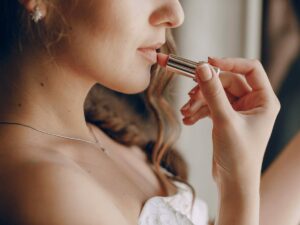
Stability tests are conducted to ensure the lipstick remains stable under various environmental conditions. This includes testing the product’s resistance to high temperatures, humidity, and light exposure. Nako Cosmetic ensures not missing this test to ensure that the lipstick maintains its texture, color, and performance over time, regardless of storage conditions.
Finally, microbial tests are performed to ensure the lipstick is free from harmful bacteria or fungi. Safety first is crucial for consumer safety as important as their beauty. The microbial test involves analyzing the product for the presence of microorganisms and ensuring it meets the safety standards set by regulatory bodies.
Following strict quality control tests, the final step in lipstick manufacturing is packaging and branding. Here are the pivotal steps in creating tough packaging and branding that resonates:
The first step involves designing packaging that is both functional and visually appealing. This includes selecting materials that protect lipstick while minimizing environmental impact. An article in Linked In stated that effective packaging design stands out on shelves with 41% will continue to purchase a product because they prefer its design.
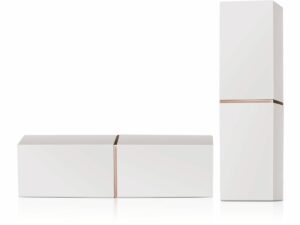
Incorporating branding elements into the packaging is crucial for building brand identity. This includes the use of logos, color schemes, and typography that align with the brand’s image and messaging. Branding elements should be consistent across all products to build a cohesive brand experience. In the end, it’s all about making a statement that’s uniquely you.
Packaging must also include necessary information and comply with regulatory requirements. This includes ingredients, usage instructions, manufacturing details, and compliance symbols such as recycling information. Ensuring that all information is clearly presented and accurate is crucial for consumer trust and legal compliance.
Looking for more diverse product options? Browse through our handpicked selections:
Still haven’t found what you’re looking for? Don’t hesitate to contact us. We’re available around the clock to assist you.
The journey of creating a lipstick involves a complex blend of art and science, from market research to packaging and branding. This guide highlights the critical stages in lipstick manufacturing, offering valuable insights for those looking to excel in the cosmetic industry.
For businesses looking for an expert in lipstick manufacturing, Nako Cosmetic stands as your best partner in this journey. For a detailed consultation on crafting superior lipsticks, contact us today.
Own Your Private Label Cosmetic Line Is No Longer Difficult Here!
Don't let questions and needs hold you back. Reach out to us today.
How to Start Your Beauty Business?